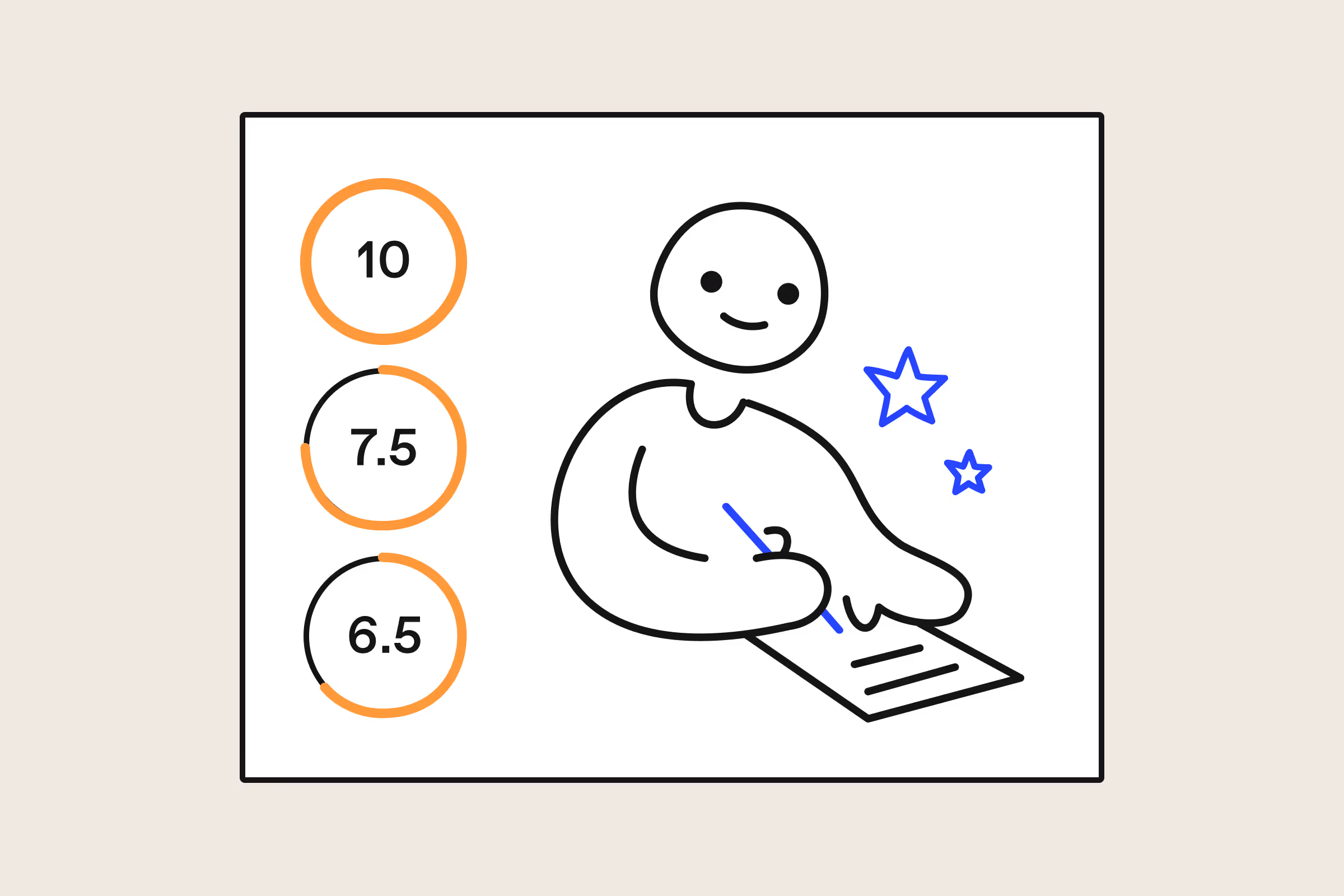Employee feedback loops: The simple secret to enhanced employee engagement

Discover Workleap Officevibe's benchmark report on 12 key employee engagement metrics

In any organization, a happy and motivated workforce is critical to success.
Common sense tells us that employees who love their job will be more productive. Job satisfaction also means fewer problems with absenteeism, employee retention, and employee relations. On the other hand, a workforce that feels neglected and disconnected from management will be dispirited and unenthusiastic.
And it’s only a matter of time before this leads to problems that hurt bottom-line profits and damage team morale.
So how can you avoid this latter scenario and ensure that your team members feel respected and encouraged? The simple answer is to make good use of employee feedback loops.
What is an employee feedback loop?
A feedback loop is a management mechanism that facilitates continuous improvement. Within an organization, encouraging regular, two-way communication between managers and employees, feedback loops help to eliminate issues and frustrations.
Managers give continuous feedback to employees on performance-related matters, allowing team members to fix issues and level up quickly. Employees can voice their views to management, making this an effective two-way process. The result is a greatly-accelerated improvement that leads to outstanding results.
It's no wonder that so many of today's leading companies consider employee feedback systems integral to their success.
The importance of employee feedback systems
Today's business world is highly competitive, so businesses need to gain an edge over rivals. A positive feedback loop helps you facilitate improvements in every aspect of your business.
A recent study by Officevibe underlines the real need for better employee feedback. We discovered that
Sentiment like this can not only hurt your bottom line but impact team morale, too.
Those numbers should frighten any management team.
Fortunately, though, it's easy to turn things around. Our stats show that 69 percent of workers would work harder if their efforts were recognized. And engagement would improve a whopping 30 times over if managers recognized employee strengths.
Read more about the differences between employee feedback and peer feedback loops.
How to implement an employee feedback loop system
The way you set up your feedback loop has a huge impact on the outcomes you can achieve. So it's well worth making an effort to get this right. Here are some tips to help you:
Ask for employee feedback
The first step in implementing a better improvement process is to ask for employee feedback. Yes, it's possible to do that manually—perhaps using emails and spreadsheets.
But that's not only slow and clunky; it's a sure-fire recipe for failure. You'll end up with a wealth of data that may be difficult to interpret and understand. Plus, why do things the hard way when there's a much easier option?
[ov_cta id="5117431"]
Today's technology has made manual feedback systems outdated and irrelevant. Organizations worldwide know they can get exponentially better results using software specifically designed to improve employee performance.
For example, Officevibe's Employee Feedback Tool automates and organizes how you collect employee feedback, regardless of the team's size or location.
💡Quick Pulse Surveys give you real-time feedback, while open-ended follow-up questions allow you to probe deeper. Plus, team members can share anonymous feedback anytime without the risk of blowback.
Analyze employee satisfaction
Once you've gathered the data, you need to analyze it and draw your conclusions. Review your employee survey results and determine which areas are most in need of attention. When you start using employee feedback loops, you will probably discover several 'quick wins' that produce significant results for minimal effort.
That's a productivity bonus, but remember that all issues raised deserve your focus. Be sure to take everyone's concerns into account to create a workforce that's happier across the board.
Turn constructive feedback into action
Once you're clear on what needs to be done, it's time to act.
If a number of employees raise the same concern, then you need to review processes and procedures. Are the complaints justified? What can you do to ease these concerns? Fixing a single problem worrying many people will lead to a considerable boost in team morale.
If an issue relates to a particular employee only, it's time to sit down and have a one-on-one discussion. Often you will find that a big frustration can be easily resolved.
Remember that these sessions should be a two-way process. Of course, the manager needs to give feedback to the employee, suggesting areas for improvement. But listening is just as critical. The team leader needs to be in tune with how employees feel and be responsive to new issues.
Rinse and repeat
While any improvement is good, continuous improvement should be your goal. The compounding effect of an ongoing feedback loop produces fantastic results. The result is that your investment in an employee feedback tool will pay handsome dividends.
To achieve this goal, you need to schedule regular surveys and feedback cycles. Book these on your calendar, or automate the process so it can't be overlooked.
Positive feedback loops
We all know that positive reinforcement is the best approach to encouraging improvement. With this in mind, structure your employee feedback loops to focus on the affirmative rather than the negative. Fortunately, there are many ways you can do just that.
Learn from feedback examples
Discussions with employees can be sensitive, so you need to handle them with care. But there's no need to reinvent the wheel when figuring out how to handle these conversations. You can use our employee feedback examples to give you a headstart.
Try Sandwich Feedback
🍔 A great way to deal with these conversations is to use the 'sandwich feedback' approach. You begin and end the meeting with positive reinforcement of the employee's strengths. In between, you sandwich in the need for improvement in specific areas.
Encouraging employee engagement
Active employee engagement is the foundation of a healthy, happy workplace. When your team members engage voluntarily, you know you are on the road to success.
Employee feedback loops help team members to feel heard and understood. Plus, the process of continuous improvement leads to a happier work environment. So implementing a feedback loop leads directly to improved employee engagement.
Integrating your feedback system
The employee feedback loop is an integral part of the internal communications system in the most successful organizations. It encourages employees to engage more often, thereby accelerating the process of improvement.
Demonstrating responsiveness
Employees need to feel that their opinions are not just heard but actively listened to and responded to. So it's essential to show your teams how their feedback makes a difference—improving the organization for the benefit of everyone.

Implementing customer feedback into the employee feedback loop
There are many different stakeholders in your business, and how they think and feel is important. When you combine their views and take action accordingly, you can achieve amazing things.
Customers and employees have different needs and expectations, which may be contradictory. While clients want lower prices, your workforce seeks higher wages. And where customers want to be your number one priority, workers will feel the same way.
So it's of value to integrate both custom and employee feedback to get a 360-degree, bird's eye view of what's essential to your organization. Feedback loops play a key role in making this happen without letting customer satisfaction or employee concerns fall through the cracks.
The best employee feedback system
Now that you understand what a feedback loop is—and why it's important—you are in pole position to take full advantage of what these systems offer. But what are the characteristics of a first-class feedback loop setup? Here's what makes the best options stand out:
Leveraging technology
The fast-paced development of today's tech is transforming how organizations manage employee feedback. Today's tools are easy to deploy and simple for employees to use—encouraging engagement making all the difference.
Extensive reporting
There's no point in collecting tons of data unless you know how to put it to good use. That's where modern feedback loop tools excel.
They turn raw data into actionable insights that you can execute right away. Managers can drill down and get an accurate picture of employee sentiment with access to granular information.
Anonymous feedback
Team members may be understandably nervous about passing negative feedback up the ladder. They may fear this will have consequences for their career or even cost them their job.
Yet, it's vitally important that managers accurately assess how employees feel. They need to know both the good and the bad. That's where anonymous feedback channels help you knock things out of the park. They allow you to surface critical issues that might otherwise go unnoticed and unaddressed.
Create your employee feedback loop today
The conclusion is clear. Employee feedback loops have an essential role to play in today's organizations. Whether you have a small team or a global workforce, you need the insights they deliver and the motivated workforce they produce.
[ov_cta id="5117431"]
So how do you put the theory into practice? Actually, that's easy…and you can even get started without spending a cent. Sign up for the Officevibe Employee Feedback tool for free and discover the benefits for yourself.
A lot has changed in business in the last few decades. Yet a happy and motivated workforce is still one of the critical indicators of success. When you deploy positive employee feedback loops to your advantage, you'll be able to reap maximum rewards from the skills, talents, and experience of your hard-working teams.
Give HR and managers the clarity, confidence, and connection to lead better every day.


.png)


.png)
.png)







